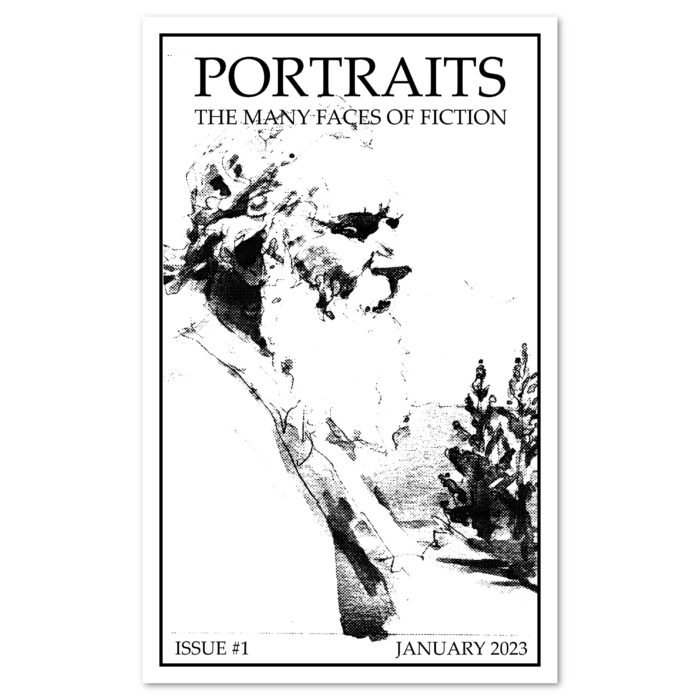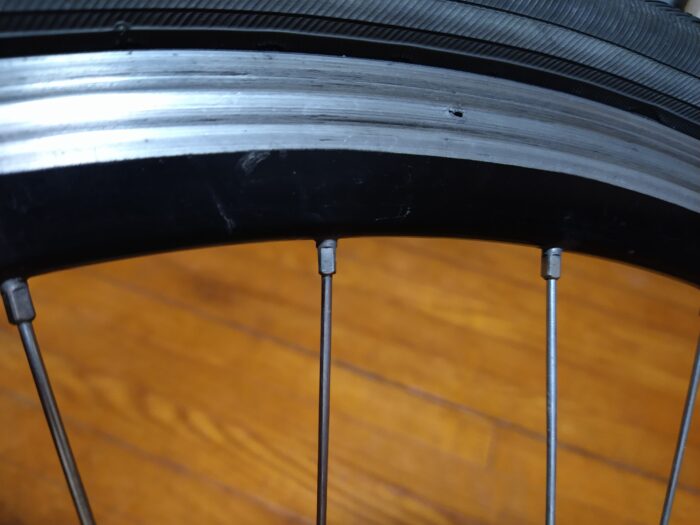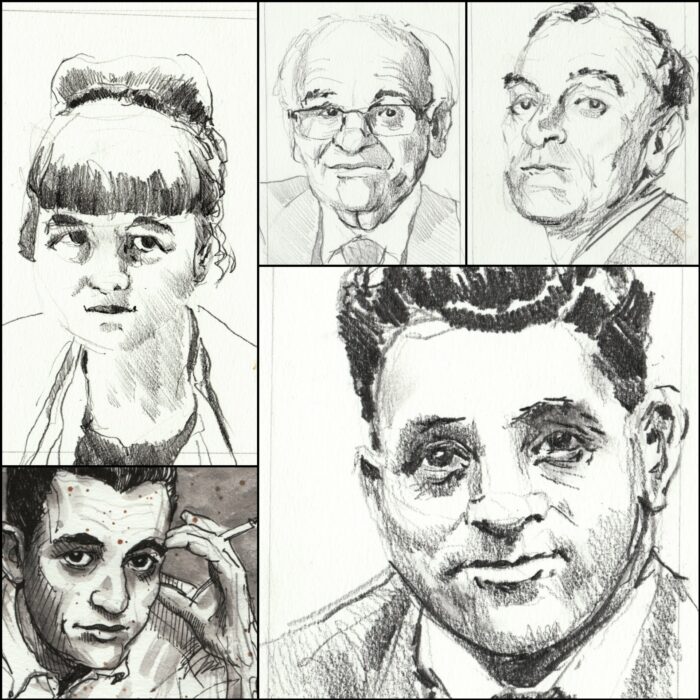PORTRAITS #1

I’m making a monthly little visual fanzine called PORTRAITS. It contains short commentary on things I’ve recently read, coupled with original art associated with each story. Bringing back an old anoved.net tradition, the commentary may be in haiku form. The illustrations are typically author portraits.
Patrons get the print zine, early access, and original art from each issue. Subsequently, the content is free to see online at Patreon.
Issue #1 went out in January 2023. Find it here!
Posted on Saturday, February 4th, 2023. Tags: art.
New Word Alert: Endling
This one’s sad. An endling is the last known living individual of a now-extinct species.
Arrived at this word by way of reading about the Thylacine. Very much worth a watch is this short film about a performance adaptation of a picture book titled The Dream of the Thylacine.
Posted on Friday, February 3rd, 2023. Tags: words.
New Word Alert!
Deaccession, to sell or otherwise let go from a collection.
Sort of the opposite of acquire. Weird that we don’t say dequire instead.
Posted on Wednesday, February 1st, 2023. Tags: words.
New Bookmarks
In addition to dusting off this blog, here are two other new links:
-
- jimdevona.art: the main place to find my art-related links. Previously hosted here, masking this blog for a while, but now set up as a separate account.
mastodonbooks.net/@anovedwandering.shop/@anoved: Nothing to see here yet, but just created as a hedge against Twitter’s unraveling, and for commentary more focused on art and books. Mastodon is sort of like an open-source version of Twitter. I did find it confusing to sign up, as there are multiple servers; they’re all interoperable, but each has a different account creation policy, and some are open only by invite. (And indeed, the first server I signed up on has since shut down.)
Posted on Monday, January 30th, 2023.
Blog Spring
It seems the spring season of renewal for reviving blogs is now. My dad’s: dddevona.blogspot.com
Posted on Sunday, January 29th, 2023.
Time for a New Front Wheel
Twelve years and some 16,000+ miles later, my new bike is still going strong – but it is finally time for a new front wheel. Lots of riding means lots of stopping, and all that brake wear was beginning to erode holes in the rim.

Ordered a new wheel through a local bike shop today. I am absolutely satisfied with the original Bike Wheel Warehouse Pure Tour rims – they’ve taken a lot of abuse and carried all kinds of loads.
Posted on Saturday, January 21st, 2023. Tags: bike.
New Word Alert!
I like meeting new words. Today’s: coulee: a ravine, gully, or other erosion-related landscape feature that may or may not still contain water. Learned from Stephen Graham Jones’ Backbone of the World.
Posted on Friday, January 20th, 2023. Tags: words.
Creating Heightmaps of Large Regions
An open question from Josh Ajima about making 3D printable models of Virginia prompted me to consider the general problem of finding a suitable elevation dataset for a large region like a state.
@DesignMakeTeach Here’s a start. (https://t.co/qS9F9kWMeQ clipped to state boundary & saved at quarter res. in QGIS) pic.twitter.com/hmwwX7dj6U
— Jim (@anoved) September 28, 2015
In this post I will explain how I made the image I posted in reply, using free tools and data.
Posted on Tuesday, September 29th, 2015. Tags: 3d, geography.
